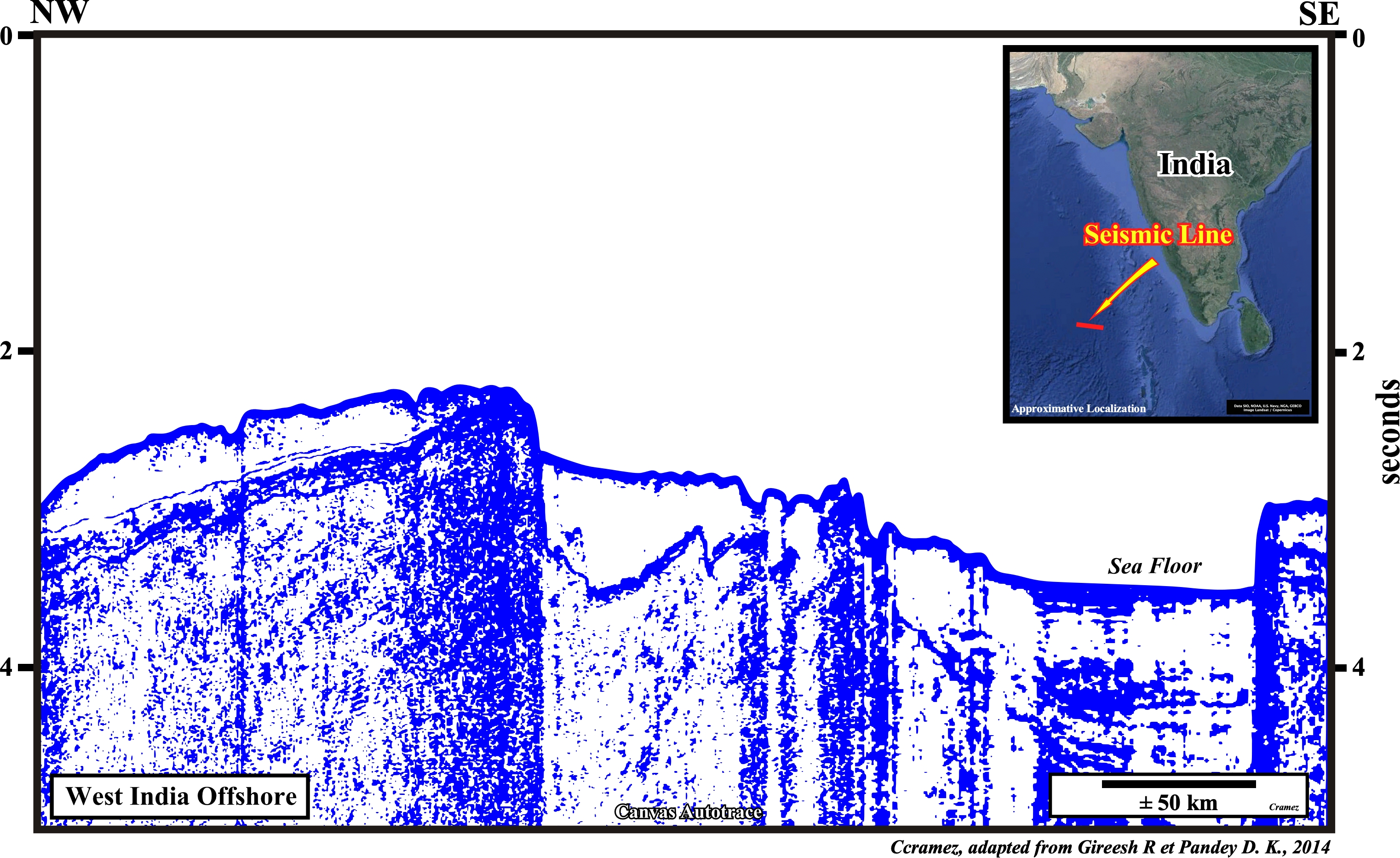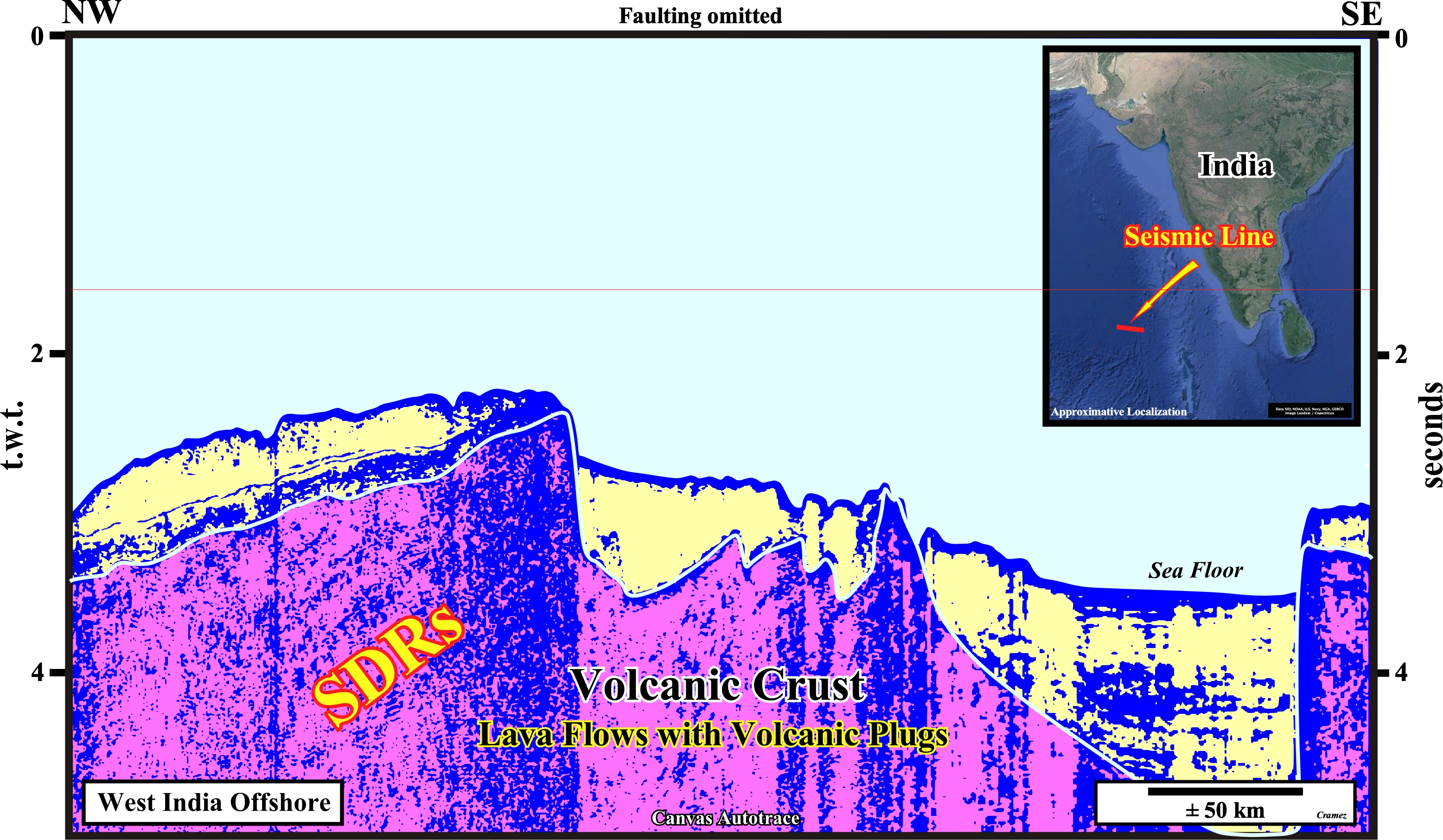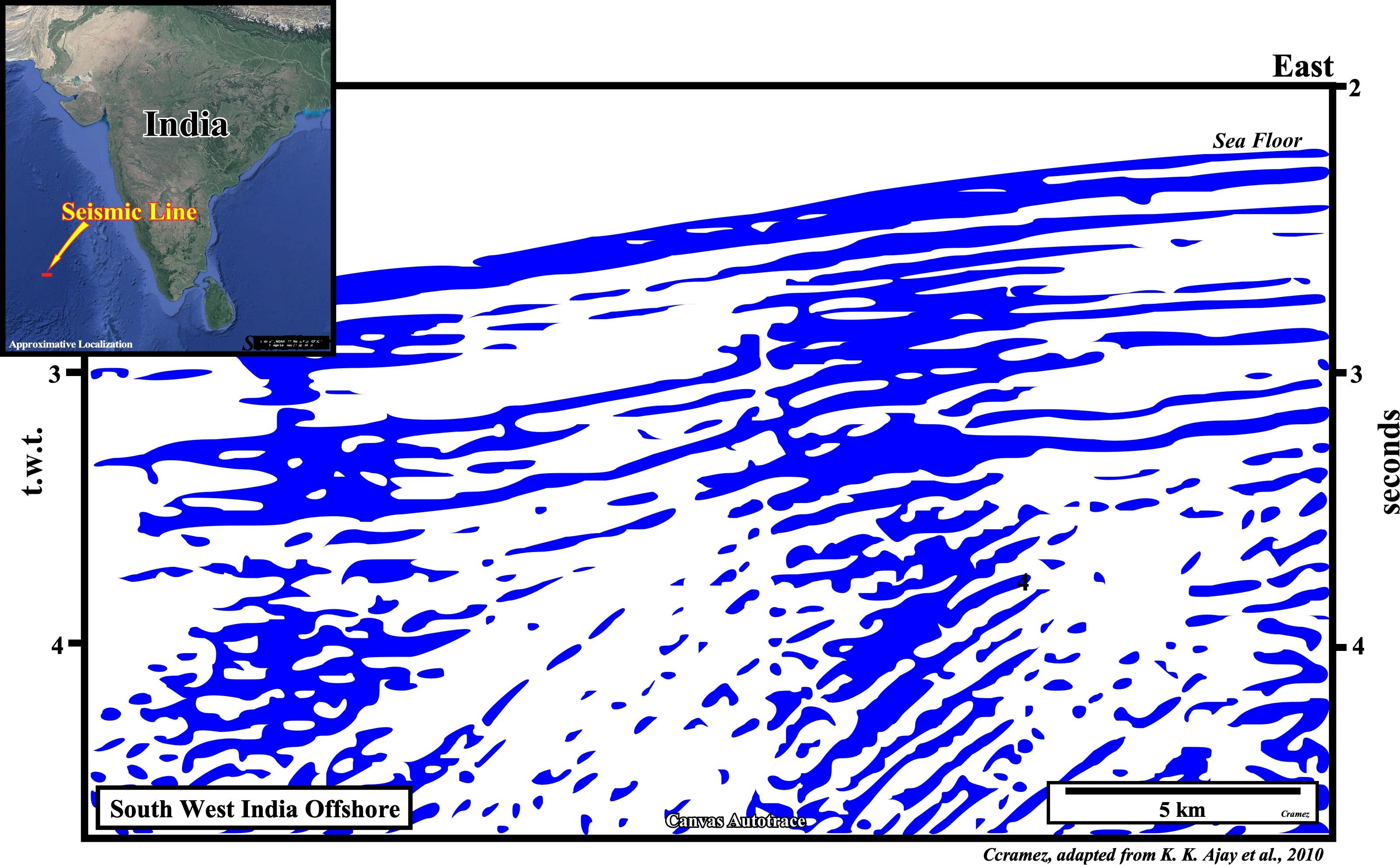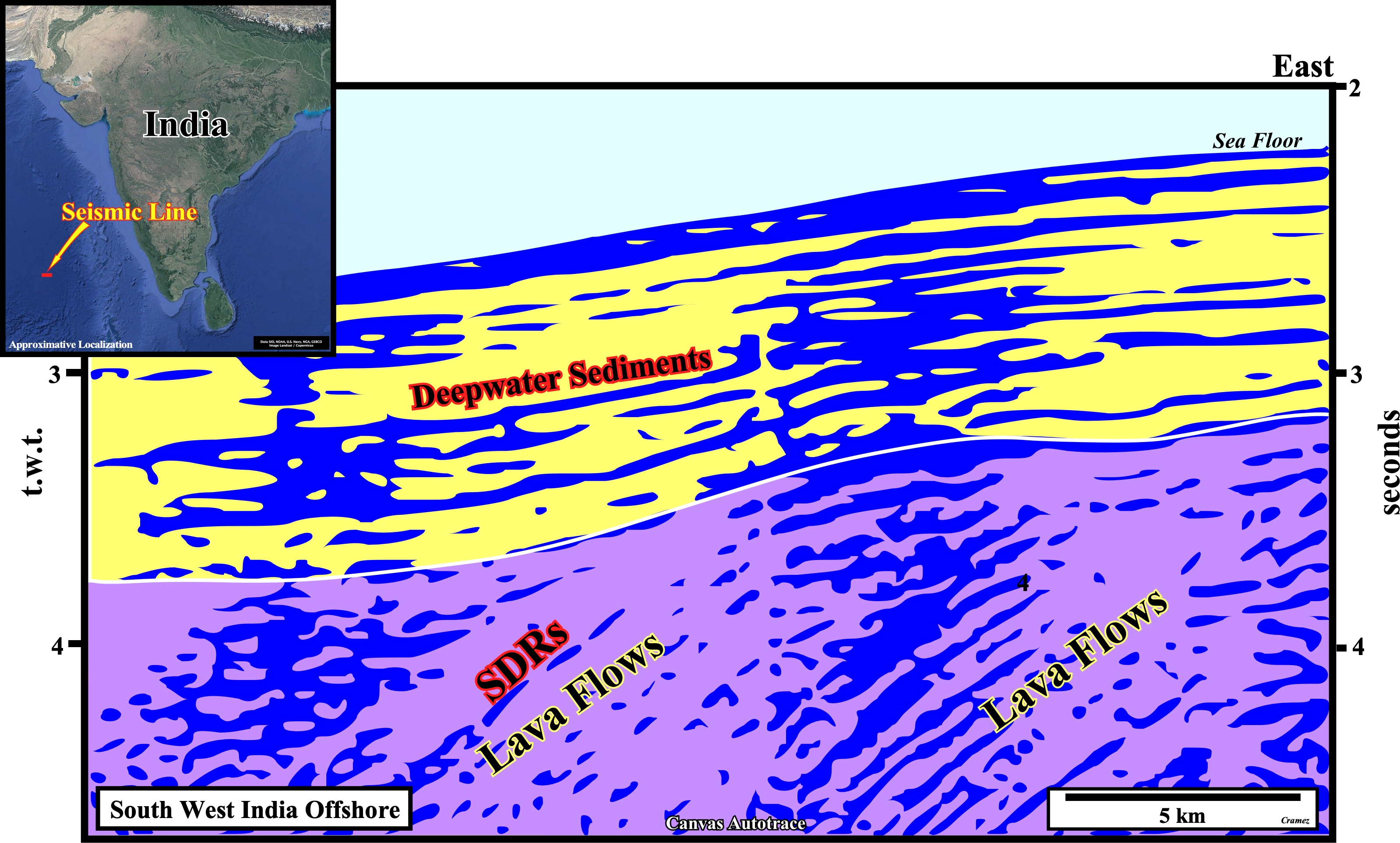

SW India Offshore
Laccadive Offshore


This tentative interpretation of a Canvas autotrace of a seismic line shot westward of the Laccadive ridge corroborates the hypothesis of presence SDRs, i.e., "sub-aerial" lava-flows (sorry by the redundancy, by definition lava can just flow under water environments) on the substratum of the Cenozoic deepwater sediments as suggested on autotrace of Page 11. Similarly, the occurrence of the SDRs is obvious on Goa offshore seismic lines as illustrated on Page 3.


On this tentative geological interpretation of a Canvas autotrace of a detail of of a seismic line located westward of the Laccadive ridge, the SDRs (post breakup lava flows) are obvious under a deepwater sediments. Remind SDRs are vomited by volcanoes and central fissures aligned parallel to the breakup zone. These volcanic flows, which can reach more than 10 km in thickness, thin in continentward, forming what the geoscientists have called seaward dipping reflectors (SDRs), before they realized their true volcanic lithology. On longitudinal seismic profiles (parallel to the breaking line), the SDRs are convex upward, with slopes and thicknesses increasing basinward, as illustrated on this tentative geologically interpretation. This tilting (dipping seaward) results from the overload of the most recent flows, which, progressively, move basinward. In cross-sectional profiles, SDRs are sub-horizontal. Generally, the SDRs form a band with little accentuated magnetism, located upstream of the oldest magnetic anomaly of the oceanic crust (difference between the actual value of the Earth's magnetic field strength, measured with a magnetometer, and the average value calculated theoretically).
Send E-mails to carlos.cramez@bluewin.ch with comments and suggestions to improve this atlas.
Copyright © 2001 CCramez
Last update:
2022